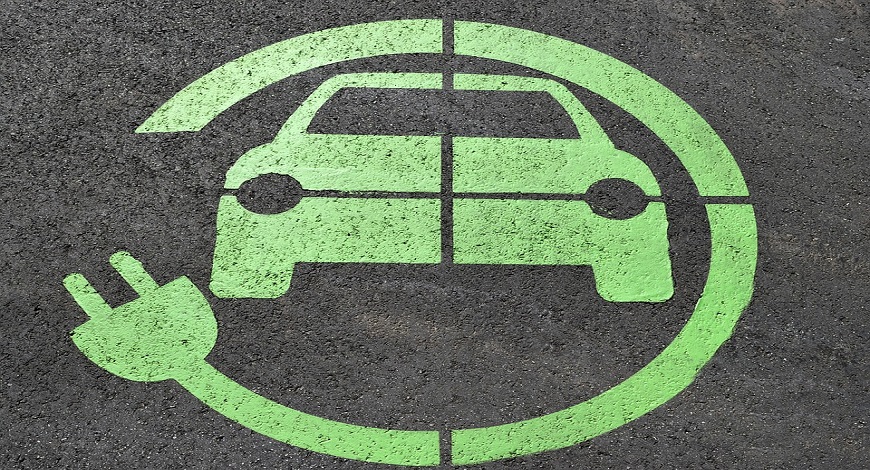
Table of Contents
The recycling of lithium-ion batteries stands as a pivotal aspect of the battery supply chain and significantly influences market dynamics. The global energy landscape is slated to undergo a seismic shift as the recycling of lithium ion battery scrap scales up, driven to make renewables, EVs, and battery energy storage circular.
The circularity enabled by battery recycling is a critical factor in reshaping the battery market and value chain dynamics, but the exact impact figures of this confluence may not be visible until the 2030s. This edition of LOHUM Green Gazette delves into the impacts of lithium-ion battery recycling on market prices, growth of clean technologies, the advent of new business models, and collaboration opportunities.
Market Impact and Growth
Lithium ion battery scrap recycling can profoundly impact the market by stabilizing the supply of critical materials, potentially lowering prices, and contributing to market growth by ensuring a sustainable supply of materials. This process allows for the complete recovery of valuable metals such as cobalt, lithium, and nickel, essential for battery production. By providing a secondary source for these materials, recycling can reduce reliance on mining, mitigating environmental, economic, and ethical challenges.
The market is projected to see considerable growth, with estimates suggesting a value of 35 billion U.S. dollars by 2031. This growth is fueled by technological progress, which enables higher recovery rates and improved economics, as well as government grants promoting technology advancement.
Furthermore, the growth of the battery recycling market is driven by increasing awareness of environmental sustainability and the need to reduce landfill waste as seen in Extended Producer Responsibility legislations. As governments and industries prioritize sustainable practices, the demand for efficient battery recycling systems is expected to rise, further boosting market growth.
Price Dynamics and Emerging Business Models
The lithium-ion battery recycling market is witnessing a transformative shift in price dynamics and business models, driven by the increasing demand for electric vehicles (EVs) and advancements in recycling technologies.
- Influencing Factors on Price Dynamics
A study using the Vector Error Correction Model (VECM) method revealed that the demand for EVs plays a significant role in the short-run dynamics of cobalt and lithium prices. The rise in EV demand has been linked to the recent increase in lithium and cobalt prices, critical materials for lithium ion batteries. In the long run, lithium and nickel prices tend to move inversely with cobalt prices, indicating an interplay between these commodities as the market evolves.
- Economic Impact of Recycling
Recycling lithium-ion batteries can mitigate the risk of supply shortages and stabilize raw material prices. An economic analysis highlighted that proper utilization of waste batteries could create beneficial economic opportunities and jobs, particularly in densely populated countries like India, where the EV battery market is expected to expand significantly.
Emerging Business Models
The battery recycling industry is exploring various business models to adapt to market needs. Some of the most notable models include:
Tolling Model:
Recycling plants process batteries for third parties, charging a fee for their services and returning the processed materials to the owners. This model allows battery owners to recycle without assuming the market risk of buying and selling materials.
Closed-Loop Model:
This approach involves taking ownership of the materials entering the recycling plant, thereby assuming market risk. It is favored by original equipment manufacturers (OEMs) who seek to secure a supply of recycled materials to meet regulatory requirements and incorporate recycled content into their products.
Collection Centers, Aggregation, and Refurbishment:
Entrepreneurs and investors are considering business models that range from collection centers to advanced lithium ion battery scrap recycling plants and material recovery.
In addition to these, Battery-as-a-Service and Battery Lease & Swap Programs are also gaining traction. Successful models will likely combine innovation, sustainability, and collaboration with government agencies and industry partners.
Future Projections & Sustainability
The future of lithium-ion battery recycling is marked by substantial growth driven by escalating demand for EVs, portable electronics, and renewable energy storage systems. The market is expected to grow from USD 4.50 billion in 2024 to USD 23.21 billion by 2032, with a CAGR of 22.75%. Sustainability and circular economy principles are becoming central to the industry, with companies committing to decarbonization and sustainable practices. Regulatory shifts towards sustainability, such as Europe’s “Fit for 55” program, India’s Battery Waste Management Rules and the US Inflation Reduction Act, are steering the market towards a greener future.
Furthermore, consumer demand for environmentally friendly technologies is on the rise, with EVs expected to lead car sales in some nations by 2030. This shift in consumer preferences underscores the importance of battery recycling in meeting the demands of a sustainable future. Companies are increasingly differentiating themselves through commitments to sustainability, engaging in initiatives that reduce environmental impact and promote responsible resource management.
Strategies for Market Collaboration in Lithium-Ion Battery Recycling
Collaboration emerges as a cornerstone strategy for fostering innovation, efficiency, and material circularity. The need for cohesive and strategic partnerships is leading to new business models, standardizations, and efforts by all stakeholders that improve the ease of circularity.
Cross-Sector Partnerships
The complexity of battery recycling necessitates expertise from diverse fields, including material science, logistics, policy-making, and consumer electronics. By forming cross-sector partnerships, companies can leverage the strengths of different industries to optimize the recycling process.
Research and Development Alliances
Advancements in recycling technologies are crucial for improving recovery rates and reducing costs. Collaborative research and development (R&D) efforts can accelerate innovation, leading to breakthroughs in areas such as battery disassembly, material separation, and material purification. Joint R&D initiatives, often supported by government grants or industry consortia, can pool resources and knowledge, driving progress that benefits all participants as well as consumers.
Shared Innovation Platforms
Open innovation platforms can facilitate the sharing of knowledge and technologies among companies, research institutions, and startups. These platforms can act as incubators for new ideas, allowing participants to co-develop recycling technologies and business models. Shared innovation also extends to data sharing, where insights from battery usage and lifespan can inform better recycling and manufacturing practices.
Standardization and Certification
To ensure the quality and safety of recycled materials, industry-wide standards and certifications are essential. Collaborations aimed at developing these standards can help create a level playing field and build trust among consumers and industry players. These serve as a benchmark for sustainability, encouraging companies to adopt best practices in recycling yield and quality. Examples include the Recycling Materials Association (ReMA), and the Council of Scientific & Industrial Research (CISR) in India which play direct or collaborative roles in setting up recycling standards.
Policy Advocacy Groups
Collaboration is not limited to industry players; it also involves engaging policymakers to shape a regulatory environment that supports battery recycling. Industry associations and advocacy groups can represent the collective interests of circularity and decentralization of materials and clean technologies. Consequently, industry players call for policies that more inclusively incentivize sustainable practices and investment in recycling to turn it into a sustainable source of materials production.
Community Engagement and Education
A successful recycling ecosystem requires participation from the end-users of batteries—consumers. Collaborative efforts to educate the public about the importance of circularity and how to participate, can increase collection rates and support Net Zero efforts. Community engagement initiatives can range from school programs to public awareness campaigns, all aimed at fostering a culture of recycling. It is through the concerted efforts of all stakeholders that the industry can overcome challenges, innovate, and grow sustainably.
The future of battery recycling depends on the ability of companies, researchers, policymakers, and consumers to work together toward a common vision of a circular economy. By thoroughly exploring collaboration opportunities, the lithium ion battery scrap recycling industry can ensure that it plays a pivotal role in the global transition to renewable energy and sustainable practices. Lithium ion battery scrap recycling is not only imperative to sustainability but also a significant economic opportunity, influencing the market in various ways, and capable of reducing both economic & environmental costs.
Related blogs
This entrepreneur wants India to make its own lithium-ion cells for electric vehicle batteries

Forbes India
Rajat Verma already recovers raw materials from used cells at his venture, LOHUM Cleantech. He wants to close the loop by making cells in India as well.
India needs integrated recycling and repurposing battery business model: Rajat Verma of LOHUM Cleantech

YOURSTORY
In an interaction with AutoStory, Rajat Verma, Founder and CEO of LOHUM Cleantech, speaks about building his company, and about battery manufacturing and repurposing as an industry.
Sourcing Raw Materials Is A Big Challenge In Li-ion Battery Space: Founder Lohum

Business World Disrupt
Recognized as ‘The Most Innovative Company of the year 2022’ by The Confederation of Indian Industry (CII), LOHUM is a producer of sustainable Li-ion battery raw materials